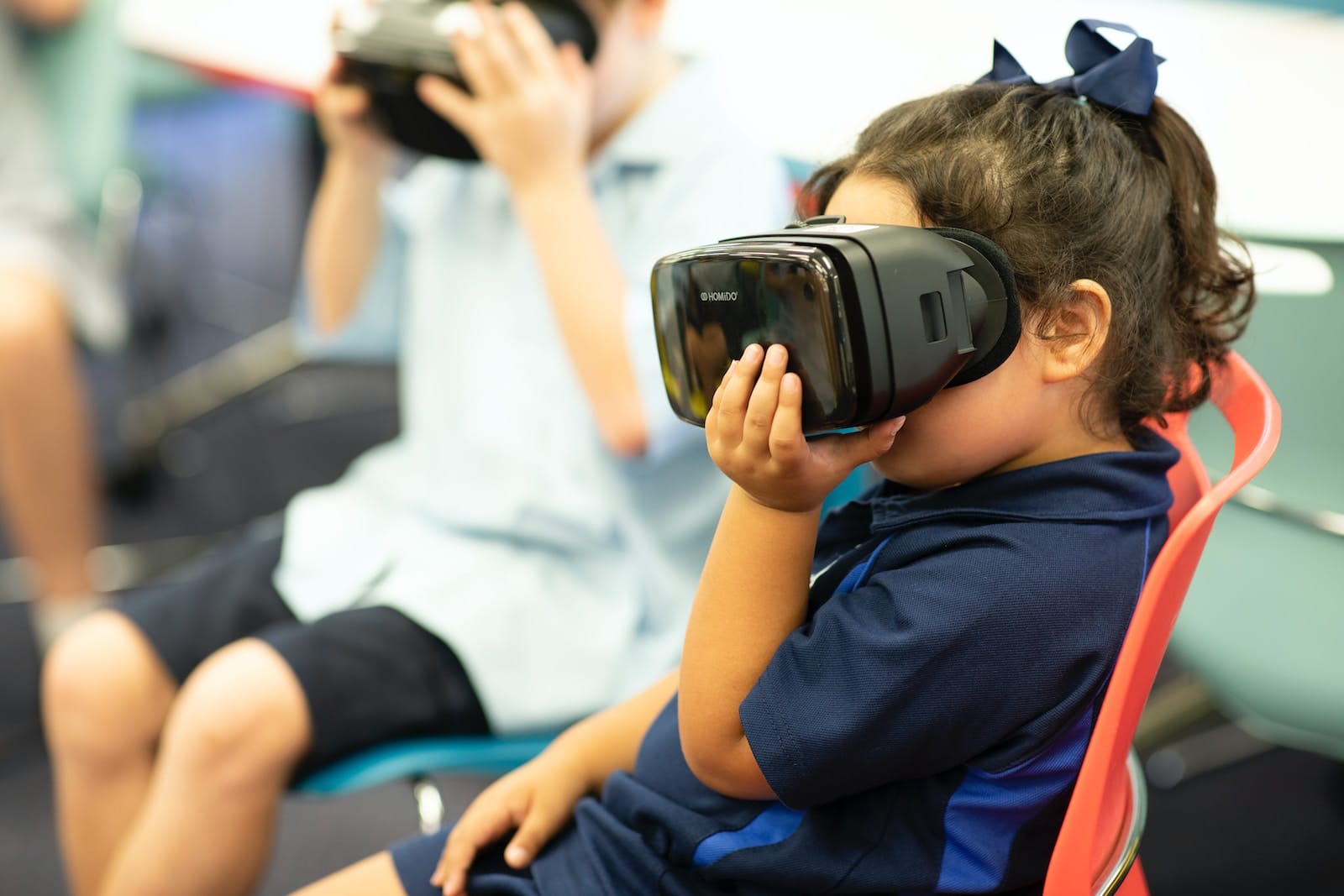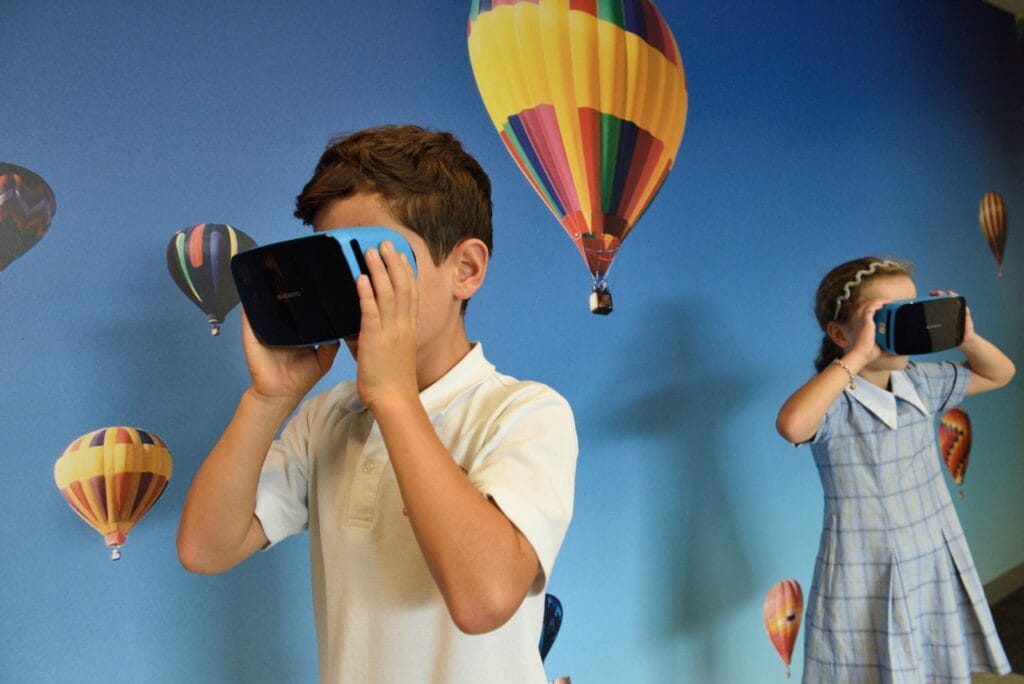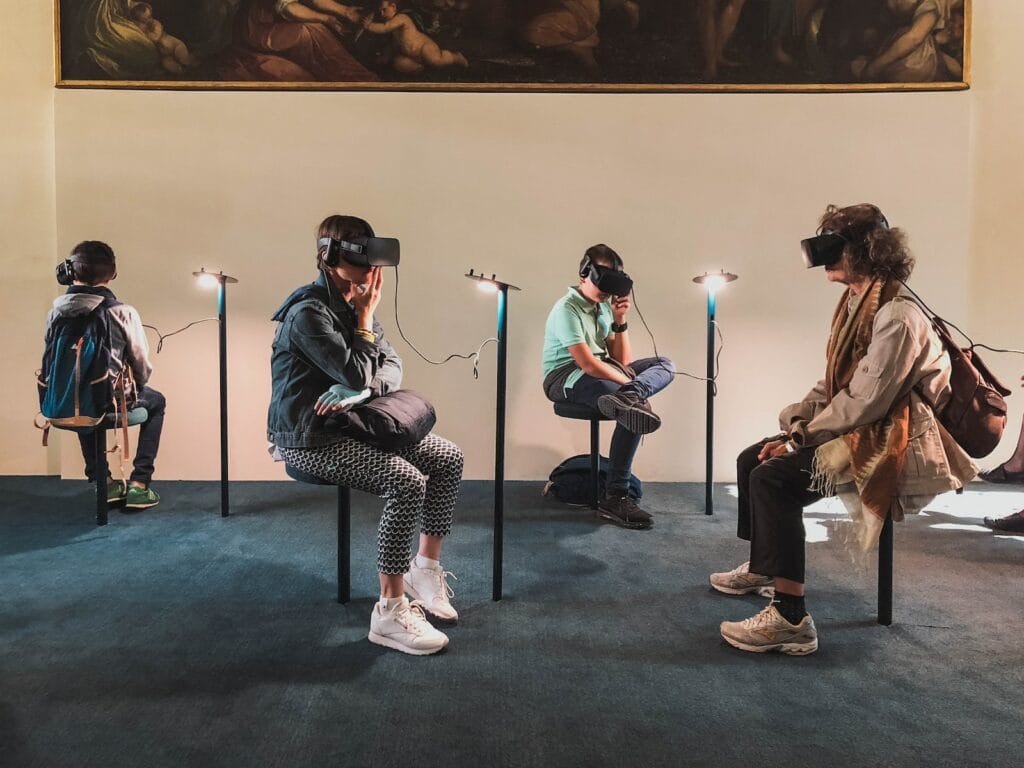VR’s Transformation of Education

Virtual Reality (VR) technology has evolved rapidly in recent years, transcending its initial reputation as a gaming novelty to become a powerful tool for education. As educators and students alike seek innovative ways to enhance learning experiences, VR has emerged as a transformative force in education. This article explores the ways in which VR is revolutionising the world of learning, bridging gaps, and expanding horizons in the realm of education.
Learning Environments
One of the most significant impacts of VR in education is its ability to create immersive learning environments. Traditional classrooms often struggle to capture the attention of students and provide real-world experiences. VR, on the other hand, transports students to a different reality, allowing them to explore historical sites, travel through the human body, or visit distant planets. This immersive approach makes learning more engaging, memorable, and enjoyable.
For example, history lessons can come to life as students stand on the virtual battlefields of famous wars, or science classes can explore the intricacies of cellular structures by navigating through a 3D model of a cell. This level of immersion helps students develop a deeper understanding of complex subjects.
Equal Access to Education
VR also has the potential to bridge the gap in education accessibility. Not all students have access to high-quality educational resources, especially those in remote or underserved areas. With VR technology, geographic and socioeconomic barriers can be overcome. Virtual classrooms can be accessed from anywhere in the world, democratising education and ensuring that all students have access to the same opportunities.
Additionally, VR can cater to students with various learning styles and abilities. It provides a customizable learning experience, allowing students to progress at their own pace and receive individualised instruction. For example, students with special needs can benefit from tailored VR simulations that address their specific requirements.

Experiential Learning
VR promotes experiential learning, which is a powerful educational approach. Instead of passive consumption of information, students actively engage with the subject matter. For instance, medical students can practise surgical procedures in a virtual operating room, engineering students can build and test prototypes, and language learners can immerse themselves in authentic cultural contexts.
Experiential learning not only enhances understanding but also fosters problem-solving skills and critical thinking. It encourages students to learn by doing, which is often more effective than traditional lecture-based learning.
Cost-Effective Training
In professional and vocational education, VR offers cost-effective training solutions. Simulations and virtual training modules can replace expensive physical equipment and environments. For example, airline pilots can practice emergency procedures in a virtual cockpit, reducing the need for costly flight hours. Similarly, medical professionals can gain practical experience through VR simulations before working with real patients.
This cost-effective aspect of VR training benefits both educational institutions and learners by reducing expenses while improving the quality of instruction.
Global Collaboration
VR technology also fosters global collaboration and cultural exchange. Students from different parts of the world can meet in virtual classrooms, work on projects together, and gain cross-cultural perspectives. This globalised learning experience prepares students for an interconnected world and promotes tolerance and understanding among diverse communities.
Virtual Reality is transforming education by creating immersive learning environments, increasing accessibility, promoting experiential learning, offering cost-effective training, and facilitating global collaboration. While the technology is still evolving, its potential to revolutionise the way we learn is undeniable.
As educators and institutions continue to explore the possibilities of VR in education, it is crucial to ensure that access to this transformative technology is equitable. By harnessing the power of VR to engage students and expand educational opportunities, we can pave the way for a more inclusive, engaging, and effective learning experience for learners of all ages and backgrounds. VR is not just changing education; it’s reshaping the future of learning itself.





